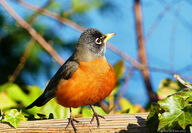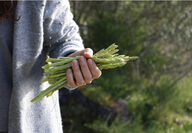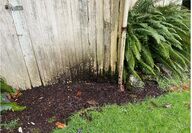Sorted by date Results 1 - 25 of 133

Reality can get skewed when there are so many sources of information – books, magazines, newspapers, nurseries, and, most of all, the internet and social media open up lots of room for contradiction. So, how do you find the right answer to gardening questions? Nine experts from Oregon State University Extension Service stepped up to bust some common gardening myths. Read on to get some research-based answers to 10 common misconceptions. MYTH: You should top a tree to control its height. R...

Growing asparagus requires patience—from planting to harvest, it takes two to three years—but the wait is well worth the reward. Homegrown asparagus is one of the earliest vegetables of spring. Its quality is much better than store-bought spears and less expensive. Once established, this vegetable is easy to grow. And asparagus is beautiful. A member of the lily family, its fern-like foliage turns from green to gold in fall and can be a backdrop to chrysanthemums or other late-season flo...

American robins are a favorite harbinger of spring, but most people take this ubiquitous Oregon native for granted. Though still abundant, robins are declining in urban settings and could use some help from homeowners. Oregon State University Extension Service wildlife experts encourage Oregonians to learn about these underappreciated native birds. They’ve developed the following information to help people foster robins in their landscape. * Robins (Turdus migratorius) seen in the winter months...

If conifer tree planting is on your late winter or early spring to-do list, there are some things you can do to improve your success. When it comes to planting conifers, timing is everything, according to John Punches, Oregon State University Extension Service forester and associate professor in the OSU College of Forestry. Punches recommends planting when the upper 10 inches of soil is moist, the soil is not frozen more than a half-inch deep, the snow cover is less than two inches and air...

Growing asparagus requires patience – from planting to harvest takes two to three years, but the wait is well worth the reward. Homegrown asparagus is one of the earliest vegetables of spring. Its quality is much better than store-bought spears, and it’s less expensive. Once established, this vegetable is easy to grow. And asparagus is beautiful. A member of the lily family, its fern-like foliage turns from green to gold in fall and can be a backdrop to chrysanthemums or other late-season flower...

Beautiful seed catalogs hit mailboxes every January, tempting gardeners with full-color photos and glowing descriptions. Before you buy, though, read those enticing seed packets. Nichole Sanchez, Oregon State University Extension Service horticulturist, tells gardeners to plan before choosing seed. It’s so easy to go overboard. Of course, if you do there’s always someone happy to take them off your hands. Understanding terms associated with seeds will help you pinpoint which selections best ser...

When winter comes and the menu for birds shrinks in urban backyards, they rely on the kindness of humans. That doesn't mean just a bird feeder of seeds and nuts. "Different birds are attracted to different foods and it's good to have a variety," said Dana Sanchez, a wildlife specialist for Oregon State University's Extension Service. "In addition to bird feeders, which people sometimes forget to fill, they need plants to forage on." This time of year, you'll notice winter wrens, pine siskins,...

Wisteria delivers a beautiful spring display, but this vigorous vine needs plenty of pruning to keep it from swallowing the garden. “Wisteria are very vigorous vines and can climb easily to 30 to 40 feet,” said Neil Bell, a horticulturist with Oregon State University Extension Service. “They can be quite heavy and should be grown on a strong structure.” When people see the jaw-dropping blooms erupt in mid-spring, they covet wisteria for their garden. But, they should first know that in addition...

If you’re a gardener, you’ve heard it a thousand times: Add compost to improve the soil, feed the microbes that release nutrients, and grow better plants. But what if that isn’t always the case? Believe it or not, research by Oregon State University found too much organic matter can have a negative effect. Wait. What? There are the environmental consequences of fertilizer leaching and runoff, the expense and time to buy and apply the compost or other organic matter and, in some cases, plant...

Just when you’re ready for a long winter’s nap, it’s time to tend your fruit trees. If you don’t, chances are they’ll struggle in the coming season. Giving them attention now helps ward off insects and diseases, said Steve Renquist, a horticulturist for Oregon State University Extension Service who has taught hundreds of gardeners the basics of managing fruit trees. Applying dormant sprays – such as Superior dormant spray oil, copper, and sulfur – helps control nasty pests and diseases, inc...

Ignoring moisture and insect damage in the home leads to serious problems down the line. An annual inspection is essential to head them off. Whether you do it yourself or hire someone, start your inspection by checking out this article from the Oregon State University Extension Service on home moisture problems to help solve many problems you might encounter. If you plan to inspect, maintain, or repair yourself, begin by taking a tour around the exterior of the house. Does water wick up the...

While you’re battling the winter blues, make your own seed-starting mix and plan for the gardening days ahead. Home gardeners can start vegetable and flower seedlings indoors from four to 12 weeks before the last average spring frost in their area, which means it’s time to get started. Making homemade planting medium can be more economical than buying a sterile mix at the store, said Brooke Edmunds, a horticulturist with Oregon State University’s Extension Service. A good germinating mix must...

In the moist Pacific Northwest, moss on roofs is inevitable. The ubiquitous plant clings to shingles, causing damage that can lead to expensive repairs and replacements. There’s nothing to be done about the moisture, but moss also needs shade to grow. The key to keeping it at bay is to trim trees so sunlight filters to the surface of the roof. “You can clean all you want but to keep moss at bay, the environment needs to change, said Jay Pscheidt, a plant pathologist with Oregon State Uni...

Winter-blooming indoor plants are a welcome way to take the edge off the chill and gloom of winter and make delightful gifts for the holidays. The choices go beyond traditional poinsettias and amaryllis. Colorful African violets, gloxinia, cyclamen, orchids, ornamental peppers, and Christmas cactus are blooming and readily available. Dress them up with bows and cellophane or combine a few in a basket with store-bought or garden-harvested moss and some decorations and present them as gifts or to...

Six stellar shrubs to brighten the winter garden In January and February, the flowers of winter arrive, blooming as cheerfully as the showoffs of spring. “One of the coolest things about gardening in the Pacific Northwest is winter gardens,” said Neil Bell, a horticulturist with Oregon State University’s Extension Service. “Spring is overwhelming with flowers, but in winter it’s surprising. It’s nice to see something that’s so unexpected. And then there’s the scent; such an enjoyable thing.” One...

Research to prove or debunk current opinions remains scarce as the debate over whether native plants or their cultivars attract and nourish the most pollinators. The research that has been done – primarily on the East Coast – hasn’t been conclusive. In fact, according to a doctoral candidate in the Oregon State University College of Agricultural Sciences who is completing her dissertation on native plants, their cultivars, and pollinators, the findings have been all over the map. “We were in...

Hazelnut, walnut, or chestnut trees in your home orchard can keep you supplied with nuts for months if you know the best ways to harvest, handle, and store them. Harvesting hazelnuts means gathering them as they fall from the trees – before autumn rains, if possible, said Ross Penhallegon, a horticulturist with Oregon State University’s Extension Service. You can shake branches lightly, but in most cases, the nuts will fall on their own. Walnuts are mature as soon as the husk cuts free from the...

When it comes to plants, bulbs are about as easy as it gets, and now’s the time to get them in the ground. “You plant spring-flowering bulbs in fall, they grow over winter, flourish in spring, and go dormant in summer,” said Heather Stoven, a horticulturist with the Oregon State University Extension Service. “Once they’re in the ground, they do quite well over multiple years with little maintenance.” On top of that, bulbs are drought-tolerant. “That’s one of the great things about them,” St...

Mild days and cool nights this fall promised a spectacular show of color, and the promise came true. “This fall has been the best year for color in recent memory,” said Neil Bell, a horticulturist with Oregon State University Extension Service. “The weather has been perfect for the brilliant show we’re enjoying.” It takes a slow progression of cool to warm days and cool but not freezing nights to bring on such a glowing display, he said. That kind of weather brings on dormancy slowly and leads...

In spring garden centers stock a tempting variety of brightly colored tuberous begonias that are hard to resist. Gardeners have a tremendous choice of flower color in shades of orange, pink, yellow, white, and bi-colored. But these lush plants don’t grow over winter and must be protected. The tubers can be saved and planted again the next spring for another year of showy color. The tuberous begonias should not be confused with the low-growing wax begonias often called annual bedding begonias tha...

Reaching for a pesticide – even an organic one – should be a thoughtful act. Nothing used to kill pests is risk-free. First, decide if you need pesticides at all by practicing Integrated Pest Management or IPM, said Kaci Buhl, Statewide Pesticide Safety Education Program coordinator for Oregon State University Extension Service. Buhl defines IPM as a way of thinking about pest management that values: * Using knowledge about the pest’s habits, life cycle, needs and dislikes; * Using the least...

Lawns languish in the heat of summer unless showered with the water they require to thrive. But not to worry, the grass isn’t dead. Come fall when the rains start again, grass greens up quickly, said Alec Kowalewski, turf specialist for Oregon State University’s Extension Service. While letting your lawn go dormant in summer isn’t a bad thing — especially with concern about water shortages — lack of irrigation does allow weeds to gain a foothold, he said. And regular wear and tear can cause com...

Anticipation of ripe pears and apples peaks in fall as fruits hang heavily from branches and begin their gravity-aided trip to the ground. But how do you know when it’s prime picking time? According to Steve Castagnoli, a horticulturist with Oregon State University’s Extension Service, the signs are different for apples and pears. “It’s much easier to recognize ripeness in apples,” he said. “Pears typically won’t ripen to eating quality on the tree so you can’t go out and taste one.” Still, th...

While the practice of no-till gardening is not new, information has traditionally centered on agricultural field crops. Now, home gardeners are catching on. “The concept of no-till has been around for a couple of decades, but research has been very focused on field crops like wheat and corn, things largely grown in the Midwest,” said Erica Chernoh, Oregon State University Extension Service horticulturist. “There’s not much on vegetable production or fruit. There’s a lot to learn, and research...

For most gardeners it’s been a normal or above-average year for the country’s most popular vegetable. “It was a fairly decent season for tomatoes,” said Brooke Edmunds, horticulturist with Oregon State University Extension Service. “We got warm enough and didn’t have any early cold spells. If you were irrigating, you probably had a pretty good year.” Some things – like weather – you can’t control. Tomatoes, which are actually a fruit, thrive at ambient temperatures between 65 and 85 degrees and...